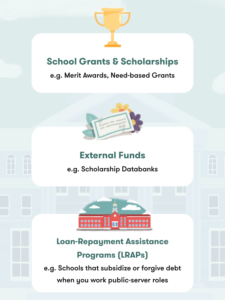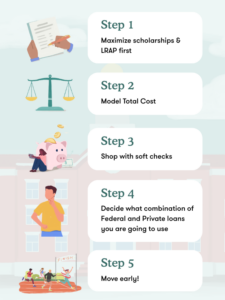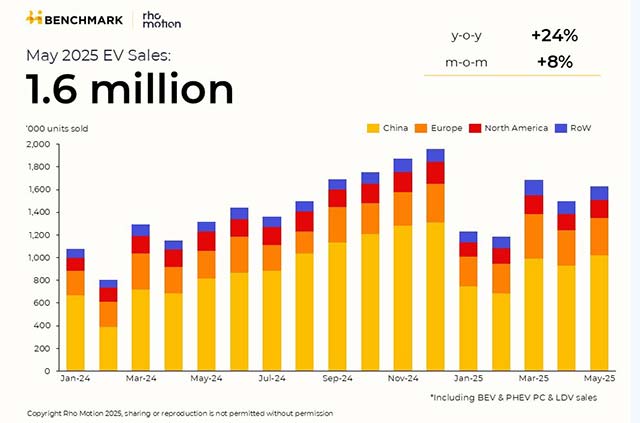Paying For Law School In 2025: A Straight-Talk Playbook
[Sponsored] Juno has consistently secured the best private loan deals for students at the Top MBA programs since 2018—now they’re bringing that same offer to law students, at no cost. Students can check their personalized offers at juno.us/atl . This article is for general information only and is not personal financial advice. The post Paying For Law School In 2025: A Straight-Talk Playbook appeared first on Above the Law.


I’m Nicolas, COO at Juno and a proud (if battle-scarred) grad-school alum who once signed on the dotted line for nearly $200,000 in student debt. Living through that experience—and later helping thousands of classmates do the same—showed me just how lopsided the loan market can be for individual borrowers.
That’s why Juno was born: we band students together, use their collective buying power, and negotiate bulk discounts on private-loan rates and perks that no borrower could secure alone. After several years of securing the best private loan deals for students at top MBA programs, we now bring the same no-cost leverage to law students. Below is the playbook I wish someone had handed me before orientation day—a step-by-step recipe for keeping your J.D. affordable.
Step 1. Chase the Money You Never Repay
School grants & scholarships
Most law-school “free money” arrives with your admit letter:

- Merit awards – driven by LSAT / GPA, leadership résumé, diversity fellowships (e.g., ABA Legal Opportunity, AccessLex MAX), or practice-area tracks such as IP or public interest.
- Need-based grants – at a growing list of schools (Harvard, Stanford, Yale, Berkeley, Georgetown, NYU).
External funds
Check the AccessLex Scholarship Databank, state-bar foundations, and affinity-bar associations (HNBA, NAPABA, NBLSA, etc.)—many awards have deadlines as late as July—worth a final sweep.
Loan-Repayment Assistance Programs (LRAPs)
~60 ABA-accredited schools may subsidize or forgive part of your debt if you enter public-service or government roles. Run the math: LRAP + PSLF can slash your effective borrowing cost.
Step 2. Decide How Much Cash to Use
- Budget honestly. Rely on your law school’s published Cost of Attendance (COA), but note that summer housing, clinics, moot-court travel, and the 3L bar-study gap often push actual spending above that amount.
- Keep an emergency fund—include bar-exam and bar-review costs (typically ~$3–$4k).
- Compare returns vs. borrowing cost. Consider your opportunity cost (e.g., potential investment gains, emergency savings) against the interest rate on your loans. If you can’t reliably out-earn that rate, using some savings may make sense. That said, many graduates from T14 schools begin their careers in Big Law, where higher starting salaries can accelerate loan repayment or qualify for refinancing later on. If that path is likely for you, it may justify holding onto more cash upfront and using it for longer-term investments.
Step 3. Know Your Loan Options
After finishing exploring all the scholarship options, and assessing how much of your savings you are willing/able to use, Student loans are used to fill the gap. U.S. citizens and Permanent Residents have access to Federal Loans. There are two types for Law students: Direct Unsubsidized (more affordable but limited to $20.5k a year) and Grad PLUS (more expensive, but can go up to the cost of attendance)
Those have fixed terms, independent of your specific credit profile. The terms are as follows for the academic year 2025 – 2026
Key points
- Federal loans carry IDR plans and PSLF eligibility— most valuable if you’ll stay in public service.
- Grad PLUS fees add 4.228 % to your balance on day one
If you are not planning to take advantage of the Federal protections, it’s worth comparing whether you can get a more affordable loan on the private side.
Step 4. Check Your Rates on Juno (without impacting your credit)
We created Juno to make it a no-brainer option if you decide to take a private loan. We negotiate to ensure our deals are better than going directly to the lender, and some of our deals don’t need a cosigner or income for you to qualify.

- Soft-credit check in ~2 minutes (Does not affect your credit)
- Fixed and variable APRs that beat Federal options for many credit tiers.
- Negotiated Rates and/or Cash Bonuses are available
- Rate Match Program: If you find a better rate from a long list of competitors, we will match it and give you 1% of your loan amount as cash back
Compare your personalized Juno quote against your Federal offers.
Step 5. Bottom-Line Playbook

- Maximize scholarships & LRAP first. Every free dollar is one you never repay.
- Model total cost. Include origination fees, bar-prep expenses, and how quickly you’ll refinance or pursue PSLF.
- Shop with soft checks. Gather real quotes, then decide—without any impact on your credit.
- Decide what combination of Federal and Private loans you are going to use: You can use any combination of Federal and Private loans up to your COA.
- Move early. If you see a rate you like, consider applying early to lock it in. Remember, rates may move at a moment’s notice.
Law school is a major investment, but thoughtful planning can keep your debt in check so you can focus on contracts, criminal, or con-law instead of compounding interest. Juno helps law students access discounted deals through collective bargaining, so you can borrow smarter and stress less. Best of luck in your legal journey!

The information provided in this article is current as of June 4, 2025, and is intended for general informational purposes only. It does not constitute legal, financial, or tax advice. Readers should consult their own advisors before making any decisions. Terms and conditions may apply to the loan products discussed. Federal student loans offer certain borrower protections and benefits—such as income-driven repayment plans and potential forgiveness options—that may be important to consider. To learn more, visit studentaid.gov.
The post Paying For Law School In 2025: A Straight-Talk Playbook appeared first on Above the Law.

















































































































































